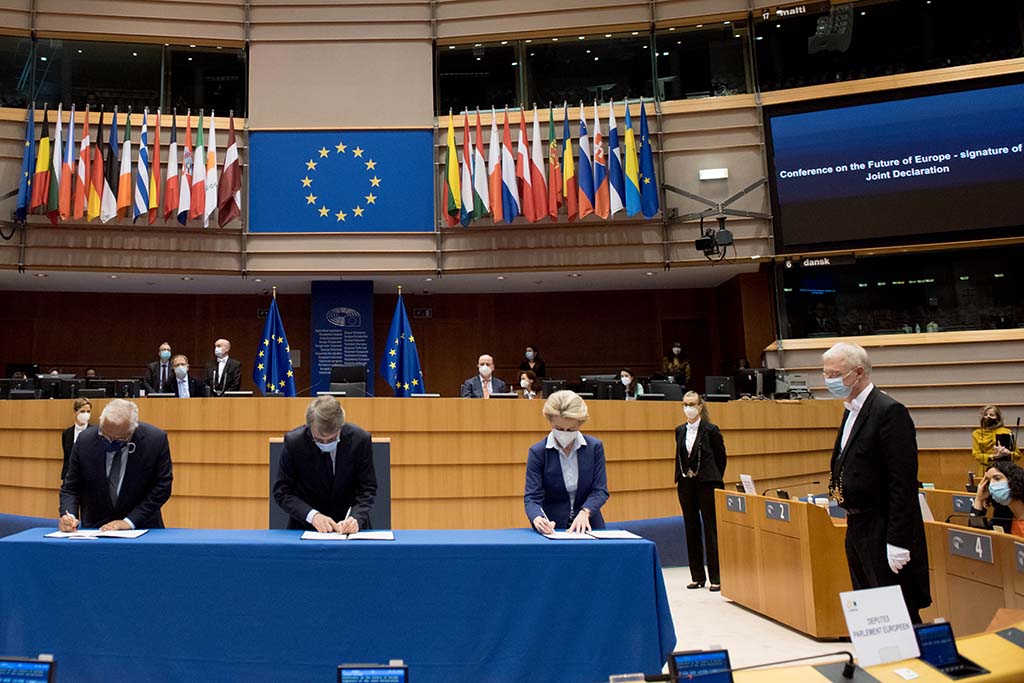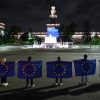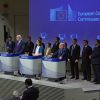What can be learnt from #SofaGate?
Commission’s President, Ursula von der Leyen, hit the headlines when she was left standing in Ankara while two men sat down very comfortably and prominently in front of her. The verdict was immediate: it was deeply offensive from a whole range of perspectives. Some objected on the grounds of gender equality, including President von der Leyen herself in her speech to the European Parliament. Some thought it was the price for engaging in business with Turkey’s authoritarian government. Others, those most interested in the institutional dynamics of European decision making, took it as a visualisation of the EU’s intergovernmental drift. There was, however, a common thread: it was not how the EU ought to be represented in the global theatres of power.
“Although the Turkey dossier has a character of its own, it shares some features with the EU’s external action in general, such as the lack of a coherent policy”.
Although the Turkey dossier has a character of its own, it shares some features with the EU’s external action in general, such as the lack of a coherent policy. There are stark differences between member states, rivalry between EU institutions, a lack of effective policy tools that both respect democratic conditionality and guarantee cooperation, and an over-personalisation of relations with third countries of strategic importance for the Union. The Conference on the Future of Europe provides a platform to at least discuss some of these issues, even if it cannot settle them. There are three specific issues to watch: the definition of external action, qualified majority voting (QMV) in foreign and security policy affairs, and the Spitzenkandidaten process.
The main interlinked challenges of the EU’s external action
Following the incident in Ankara, looking at the larger picture there are two main interlinked conundrums when defining the reasons underlying the lack of coherent policy-making in view of an external challenge, First, there are stark differences between member states as regards common policies. When devising policies for Russia or Turkey, for instance, not all member states have the same interests at stake. The divergences between member states when it comes to history, geography, foreign-policy making, cultures and interests are hard to bridge. It is also widely accepted that in a policy area such as foreign and security policy, where competence corresponds to each member state, they all want to call the shots. They can only be convinced to act in harmony while facing external challenges under the motto ‘stronger together’.
Secondly, and equally importantly, there are struggles between EU institutions that edge into rivalry. The problems between the European External Action Service (EEAS) and the European Commission are not just Brussels bubble gossip. And this is not to mention the insistence of the European Parliament in various dossiers on democratic conditionality while the European Council is willing to settle for transactional deals.
“The differences between EU institutions should be dealt with if the Union wishes to act with a coherent united voice”.
The differences between EU institutions should be dealt with if the Union wishes to act with a coherent united voice. In a multi-layered governance system such as the EU’s, representation is a tricky issue. A veteran EU official, Jim Clos, encourages all leaders to find a modus vivendi. He is quite right: if the issue is not resolved, Henry Kissinger’s well-known quote –‘Who do I call if I want to speak to Europe?’– will continue to haunt us. The Conference on the Future of Europe could an opportunity to reflect on this.
And the Conference? What’s the debate?
Before considering what the Conference can offer, it is important to understand the institutional dynamics of the ‘EU in the world’. Decades of cooperation in various foreign policy areas led to the creation of the Common Foreign and Security Policy (CFSP) as a separate and intergovernmental pillar in the Maastricht Treaty. The Treaty of Lisbon, which entered into force in 2009, led to an even more differentiated institutional structure, but one that was even more difficult. The creation of the EEAS and the appointment of a HR/VP who is responsible for the EU’s CFSP have been perceived as positive steps by the member states. Today, Josep Borrell chairs the Foreign Affairs Council while occupying the post of Vice-President of the Commission. Having said that, the dominance of member states in the Service through secondments and the insistence on choosing EU Delegation Heads from major countries have been severely criticised. A recently published report by the EEAS 2.0. task force has placed on the table suggestions as to how to improve the efficiency of the EEAS, which is an integral part of the debate. The European Commission became a more complex institution to manage as regards external action.
“To increase its influence on global challenges, the EU should come up with a plan to deal with this problem that is very hard to resolve and touches on so many dimensions of European integration”.
In addition, the Treaty of Lisbon also formally recognised the European Council as an EU institution while replacing the six-month rotation system with a permanent President. This development placed the European Council President in the spotlight, while presenting him with the task of representing the Union in CFSP matters. The Commission, on the other hand, continues to represent the Union in matters other than the CFSP. These areas, however, are extremely important when considering the EU’s external action in a broader sense. This is where the power battles have started.
It is important to understand the current institutional dynamics to judge the starting point. Is it possible to have an operational EU foreign policy in the light of the two interlinked conundrums mentioned above? Not an easy task. Is it worth trying? Definitely.
To increase its influence on global challenges, the EU should come up with a plan to deal with this problem that is very hard to resolve and touches on so many dimensions of European integration. Having said that, the Conference opens up a space to discuss at least three key issues.
The first is its definition. The Conference on the Future of Europe has titled external action as the ‘EU in the world’ and set the tone: ‘reinforcing responsible global leadership’. While doing so, it has not only focused on foreign and security policy per se but shown a more holistic approach, including other dimensions of external action such as trade policy, enlargement and neighbourhood policies, and development cooperation. It is clearly a good start.
The second issue on the table at the Conference, already demanded by many, is the transition to QMV1 in foreign and security policy. The Lisbon Treaty already empowered the European Council with a passerelle clause in CFSP. With this clause, the European Council, on the basis of unanimity, could allow the Council of the EU to take decisions by QMV in certain areas. There is also the option of ‘constructive abstention’, which allows a member state to abstain from a vote without blocking it. These options provide states with alternatives without entering into the black hole of Treaty change. A firm commitment to QMV could be achieved during the Conference.
A third issue on the table, which will indirectly help resolve the representation issue, is the empowerment of the Spitzenkandidaten process. We all remember the distribution of top jobs back in 2019 . It was mostly the leaders, with their respective political families in the European Parliament, who did the bargaining. This did not lead to the powerful figure of the European Commission President elected by the citizenry. If the process is secured and enforced for the 2024 elections, it would clearly imply an improvement in the EU’s representative character.
“(…) the EU needs to act as a cohesive and principled force on the world stage. This is not only to not end up as a playground for the major powers but also to leave a rules-based fingerprint in the world”.
What next?
How to deal with institutional rivalry? Is it a problem of design? Or of the people occupying the positions? Do big member states talk too much? There are many questions on the table. Even so, there is one goal shared by many: the EU needs to act as a cohesive and principled force on the world stage. This is not only to not end up as a playground for the major powers but also to leave a rules-based fingerprint in the world.
The world is moving very fast and creativity should always be on the table. A well-defined external action based on the Union’s strengths rather than weaknesses, centred far away from the meta-level debates such as full strategic autonomy in security and defence, is a very good starting point. The EU should aim for its goals while securing the most effective cooperation with the US. The Conference is a platform: it is the citizens, civil society, national parliaments, EU institutions, political parties and leaders that can make it a source of inspiration for the future. If we focus on specific issues that can promote the EU’s capacity to act in the world, we can end up with concrete success stories.
1 QMV requires two conditions: 55% of member states (15 of 27) and 65% of the EU’s population.



